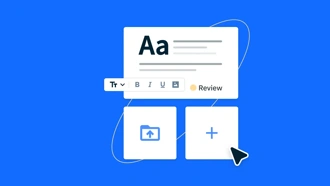Simon Sinek, in his famous TEDx talk “How Great Leaders Inspire Action,” said:
People don’t buy what you do, they buy why you do it.
In an ever-saturated market place, a narrative that creates a long-lasting experience for your audience is the one that creates brand loyalty. It brings back your audience to your products and services again and again.
It definitely starts with the WHY of your brand narrative: why you do what you do, the vision behind your company, the vision that makes you and your employees get up in the morning to serve their clients one more day.
Yes, sometimes this vision is more wishful thinking, but it has been proven that companies with such a vision successfully innovate and are leaders in the marketplace again and again.
Beyond the vision there is also how they envision their target market, their audience.
In a lot of pervasive brand narratives the story goes something like this:
Your life is not working very well. We have the snake oil that can make it better. You take that snake oil. Voila! Your life is better!
But is this the true story? Is our life better because of this or that product? Does this method of telling a story about our inadequacy as humans work?
Inadequacy Marketing is well described in Jonah Sachs 2012 book Winning The Story Wars: Why Those Who Tell and Live the Best Stories Will Rule the Future.
Since the emergence of modern marketing, professional communicators have relied on the inadequacy approach.
The truth is – and we all know it – our lives don’t get better because we bought a new pair of jeans, and we are not happier because we drank a can of sugared water.





Far worse, inadequacy marketing makes our audience feel bad about themselves, and our audience is waking up to that truth.
They don’t want to feel bad – they want to feel good about themselves.
So what can be done?
Your Audience As the Hero
Reframing your brand narrative to see your audience as the hero is a great first step. How do you do that?
- Identify yourself as the mentor archetype. Who are you in the world of your audience?
- Mentor archetypes come in all shapes and sizes: Are you a wise old teacher? An architect teaching your audience how to build something with your tools? Or are you a pioneer mentor helping them conquer new lands?
- The mentor message is that your audience is the hero of their own story, and your brand is there to support them in their success.
- Identify your audience as the heroes in their own journey of success with your product as a magic aid getting them there.
- Your brand equals the mentor that helps them wake up to their own awesomeness.
- Your products equals the magic elixir to help them on their journey.





For an example, Nike is one of the brands exemplifying this narrative with their slogan Just Do It and their many commercials supporting people just doing it.
In 2012 they released a commercial for the Olympics called “Find Your Greatness” where a 200-pound 12 year old named Nathan is running slowly towards the camera.
The narrator is speaking to us, the audience:
“Somehow we’ve come to believe that greatness is a gift, reserved for a chosen few. For prodigies. For superstars. And the rest of us just stand by watching. You can forget that. Greatness is not some rare DNA strand, it’s not some precious thing. Greatness is not more unique to us than breathing, We are all capable of it. All of us!”
The ad ends with the sentence “FIND YOUR GREATNESS.” stamped above the Nike logo as Nathan runs towards the camera.
The commercial created quite a stir with positive and negative reviews. The negative reviews said Nike was just using young Nathan; the positive reviews said Nike’s message was that we can all attain greatness if we just do it.
The commercial wasn’t selling their shoes. The commercial was creating an experience for us to find ourselves in.
Where is our struggle? How do we find our greatness?
This is something we all want, we all strive for – to be the heroes of own journey and destiny.
Now here’s a pair of shoes to get us going, to aid us on our personal race to greatness.





There are many other brands using this narrative successfully. These brands inspire their audience – their heroes – to better themselves, to live a fuller inspired life. They make their audience feel better about themselves.
This type of inspiration truly helps a brand get noticed above others and builds loyalty from their audience.
In a world where we are oversaturated by so much messaging, empowering narratives stick.
We all really do want to be the hero of our stories, and brands that support such a narrative get to come with us on our journey.












